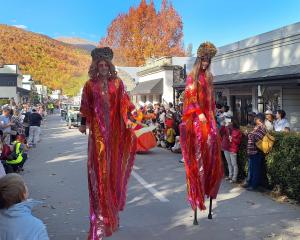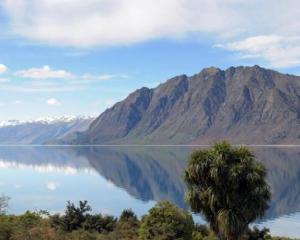
The Memories of Albert ''Albie'' David Collins, is a recent addition to the Wanaka Library.
Mr Collins, who died in 1998, spent years being paid to eradicate the native parrot from high country stations around Wanaka.
Mr Hewitt this week said he had met Mr Collins and had heard his hunting stories, so when he came across four interviews taped by the late Phyllis Aspinall, he decided to transcribe them, and gather other material about him.
Born at Kurow - one of 11 - Mr Collins grew up at Maungawera, near Wanaka, and after leaving school did various farming and mustering jobs.
About the time he got married, Mr Collins started shooting kea on Mt Aspiring Station, where he would spend nights on snowy hilltops waiting for the birds.
He was quoted, in a newspaper article after his retirement, saying the pay was good but there were few others willing to endure the harsh conditions.
''Using moonlight or a torch, and a single-shot .22 rifle, Albie Collins would shoot from late afternoon until about 2 in the morning.
''On his best night, he shot 67 birds,'' the article said.
Mr Collins recalled kea were ''at their worst for killing sheep in the spring'', particularly after a severe winter when the ground was too hard for the birds to dig up roots and grubs.
''So they would take to eating what they could get.''
He was quoted in Christine Hunt's book Something in the Hills saying some people regarded kea as ''cute little things''.
''It's nothing in winter to find 40 or 50 sheep kea-ed, torn to bits.
''You got to concentrate on the killer birds though.
''There might be only one killer in a hundred birds, and some groups have no killers in them at all.
''But when a killer attacks, it chooses a good fat sheep and starts to torment it.''
Mr Collins went on to describe the tactics of keas, describing the birds as brutal and unpredictable.
He also suggested, deer cullers leaving thousands of deer carcasses lying in the high country had taught kea to eat meat, and they had then come to rely on it.
Mr Collins said he shot more than 400 kea on Mt Aspiring Station and ''a lot'' on Cattle Flat Station as well.
''I could make better wages at shooting keas than doing anything else.''
Mr Collins often camped at West Burn Falls, hunting both kea and rabbits.
He recalled an occasion when his observation of keas led search parties to two lost trampers.
''I said ... if you go up there tomorrow morning you'll find that there's blokes in that gully.
''They said what do you mean?''I said, the keas are feeding on them.''
All the searchers were able to recover, he said, was the men's packs and bank books.
''A lot don't believe keas do that sort of thing and I've helped carry one or two off the hill that were only dead for a few hours at night and all the meat picked off the palm of their hand and wrists.
''They're very inquisitive birds.
''I'd hate to be lying hurt out on the hill with a mob of keas giggling at me.''
Mr Hewitt has included in the book various official documents related to efforts to eradicate kea.
An 1891 government memorandum refers to a subsidy of ''sixpence upon each kea beak''.
The book also contains an article suggesting 150,000 kea were killed in the 100 years prior to the 1970s, when they were given partial protection.












